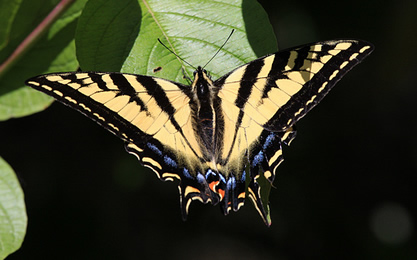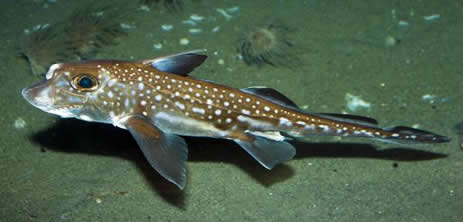

BIODIVERSITY CONSERVATION IN BRITISH COLUMBIA

Western Tiger Swallowtail (Papilio rutulus)
by
Brian Klinkenbeg
Biodiversity conservation is not just a hot topic, it is a necessary topic. With the world's species now going extinct at an alarming rate, action to protect species diversity is critical. Around the globe this action is being taken by governments, non-government groups (NGOs), and individuals.
There are many biodiversity conservation initiatives on-going in British Columbia, both at the NGO level, at the government level, and by individuals and corporations. These initiatives span a range of actions, from direct land purchase (by groups such as The Land Conservancy (TLC), the Nature Conservancy, and The Nature Trust of BC) to funding of conservation initatives (e.g. TD Friends of the Environment, Shell Environmental Fund) to direct action for endangered and threatened species recovery by groups such as the South Coast Conservation Program. They include the development of major species and ecosystem databanks that contain status and ecological information, such as the provincial government's BC Conservation Data Centre, and the UBC initiative, the biogeographic atlases of BC (E-Flora BC and E-Fauna BC), which aim to document the species of the province, identify knowledge gaps, and explore the biogeographic factors at play in species distributions--factors that will become more important as our climate changes.

Spotted Ratfish (Hydrolagus colliei) Photo by Brian Klinkenberg.
We need to act now to prevent extinction of many species on a global, provincial, and regional basis.
Biodiversity protection basically involves plugging the holes in our conservation knowledge (gap analysis), and protecting species and their habitats through use of stewardship agreements, endangered species recovery teams, invasive species controls, legal means (the Fisheries Act, the Wildlife Act) and myriad other measures.
In this section of the Biodiversity of BC web site, we aim to explore the current state of conservation in BC, including looking at measures to protect marine environments and species, the establishment of new (marine and terrestrial) parks and reserves, and the evolution of other mechanisms and means by which biodiversity in this province may be conserved.
This information will be presented in a series of links to essays prepared by BC experts, and will expand over time.
Please cite these pages as:
Author, Date. Page title. In Klinkenberg, Brian. (Editor) 2020. Biodiversity of British Columbia [www.biodiversity.bc.ca]. Lab for Advanced Spatial Analysis, Department of Geography, University of British Columbia, Vancouver.
All material found on this web site is covered by Canadian Copyright Laws. Please contact the respective copyright holder if you wish to use any illustration, photograph or text.